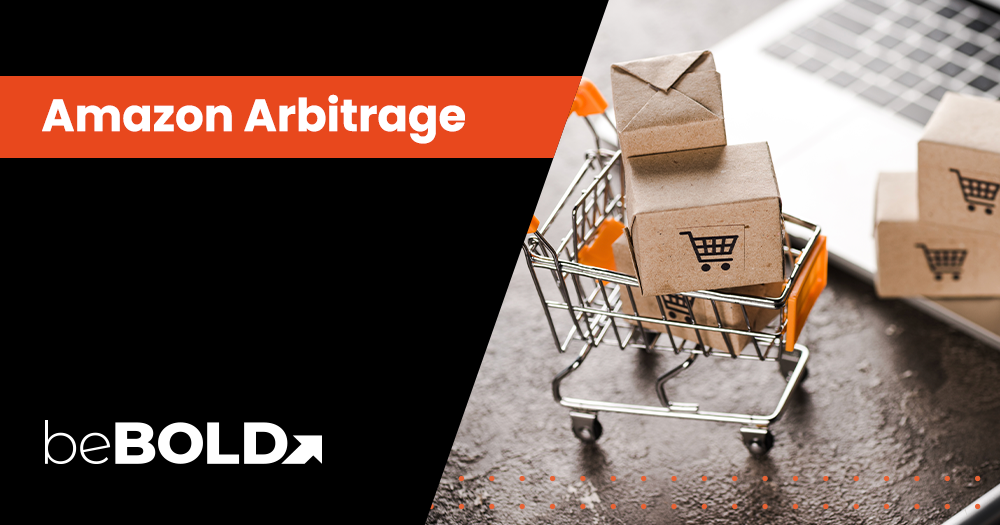Amazon Arbitrage is impacting the prestige beauty market. Sellers of all sizes source discounted products and sell them on Amazon for a profit. What makes it so enticing? First, anyone can do it with a small investment. Second, it can be a great way to make money quickly.
This practice is hurting prestige beauty brands. They are seeing their products sold at lower prices than they intended, eroding consumers' trust in these brands. In this blog post, we'll take a closer look at the impact of Amazon Arbitrage on prestige beauty brands and what brand protection strategies are available to them.
While this blog focuses on prestige beauty brands, the Amazon arbitrage beauty business model can also be translated to professional beauty brands.
An example of a professional beauty brand that is committed to arbitrage and division is Paul Mitchell. You can hear from John Paul about how they are adapting a process to reclaim unauthorized sales online using the Amazon Professional Beauty Platform.
What is Retail Arbitrage?
Retail arbitrage is the practice of buying products at a lower price from retail stores (such as clearance items or discounted goods) and reselling them at a higher price, typically on online platforms like Amazon, eBay, or other marketplaces. The goal is to profit from the price difference.
Let's take the humble pen as an example. You walk into a Walmart store and notice that pens are on sale. A $4 pen is being sold for $2. For smart retail arbitrage sellers, this is an opportunity to find the lowest Amazon FBA warehouse price. You buy 100 pens for this discounted rate and put up a listing on Amazon selling the same pen. The catch is that you're selling it for $3.90. That gives you a healthy margin while still being cheaper than the retail price!
So, what's the difference between retail arbitrage and normal retailing? When it comes to retail arbitrage, no suppliers or manufacturers are involved. You are buying directly from a retail store or market. This can cut into your profit margin but is often easier than finding and sourcing particular products through a supplier.
What is Amazon's Beauty Arbitrage Business Model and How it Works?
Retail arbitrage is often misinterpreted because some say this is the same as normal retailing but different. In traditional retail, you buy directly from the manufacturer, and during wholesale arbitration, you purchase your product through a different retailer. Its most significant contributor was the price differences.
Those seeking a way to make money have switched to Amazon retail arbitrage to start their Amazon business. This is the business model where a customer buys a product from Amazon and sends the product to a store, which is often considered less flexible than a more sustainable business model. Is time-saving really beneficial for business?
How does Amazon Retail Arbitrage Work with Prestige Beauty?

Amazon's retail arbitrage with Prestige Beauty involves purchasing discounted beauty products from retail stores and reselling them at a higher price on Amazon, capitalizing on the demand for premium beauty items.
Consider a seller who goes to a discount store like TJ Maxx and uses Amazon's sales tool to evaluate ROI. The individual frequently discovers makeup brushes from well-known cosmetic brands, such as Smashbox, at drastically reduced prices from a local store. The only thing the seller needs to consider is the associated costs and potential profits.
These brushes could have been renamed and reformulated before being sent to JCMaxx by Smash Box. Perhaps they were given to BeautyBox, who couldn't offer them to everyone anymore, so they smashed them up. The dealer sees that the brushes are straightforward and can be arbitrated in both situations.
Difference between Retail Arbitrage and Online Arbitrage
When it comes to professional beauty products, there are two main types of arbitrage: retail arbitrage and online arbitrage.
Retail store arbitrage involves buying beauty products from a brick-and-mortar store and then selling them online at a higher price. Online arbitrage, on the other hand, involves buying beauty products from online retailers and then selling them on a different online platform for a higher price.
Both types of arbitrage can be profitable, but there are some key differences to keep in mind. For starters, retail arbitrage requires you to have a physical retail store presence in the brick-and-mortar store. This means you'll need to invest in transportation costs and have the time to go back and forth between the store and your home or office.
Online arbitrage, on the other hand, can be done entirely from the comfort of your own home. You can source products from anywhere in the world and sell them on any number of online platforms.
Another key difference is that retail store arbitrage generally has a lower profit margin than online arbitrage. This is because there are more overhead costs associated with running a brick-and-mortar business. Online businesses, on the other hand, have much lower overhead costs. This means that you can potentially make a higher profit margin on each sale.
The Hidden Risks and Rewards of Retail Arbitrage for Brands: What You Need to Know
While you are researching more about Amazon retail arbitrage, you should also consider its potential advantages and drawbacks.
Key Benefits for Prestige Beauty Brands
There are several advantages of retail arbitrage for prestige beauty brands. Let's have a look at them one after another.
1. Increased Market Reach
Arbitrage allows prestige beauty brands to tap into new markets by utilizing third-party sellers or alternative distribution channels. This expands their global footprint without direct investments in those markets.
2. Enhanced Brand Awareness
Products reaching more platforms and regions can increase brand visibility and awareness. This exposure can attract new customers who might have yet to encounter the brand through traditional retail outlets.
3. Liquidation of Excess Inventory
Arbitrage provides a way to offload excess or older inventory without directly diluting the brand's prestige. This can help maintain profitability while avoiding stockpile losses.
4. Competitive Edge in Pricing
By strategically utilizing arbitrage, brands can offer products at varying price points in different regions, appealing to a broader audience while preserving their luxury image in core markets.
Challenges Prestige Beauty Brands Face with Arbitrage
While Arbitrage has a few benefits, it often leads to products being sold through unauthorized channels, making it difficult for brands to maintain control over pricing, distribution, and customer experience, which can dilute the luxury image.
1. Erosion of Pricing Integrity
Arbitrage can disrupt carefully crafted pricing strategies by introducing products at lower prices in specific markets, leading to customer dissatisfaction and diminished brand equity.
2. Compromised Product Authenticity
Unauthorized sellers may introduce counterfeit or expired products into the market, harming the brand's reputation and eroding customer trust in the product's quality.
3. Regulatory and Compliance Risks
Selling through unauthorized channels can lead to products entering markets without proper compliance with local regulations, exposing the brand to legal challenges and penalties.
What Are the Pros and Cons of Retail Arbitrage?
Retail arbitrage offers a mix of opportunities and challenges for Amazon sellers, making it essential to weigh the pros and cons before diving in. Below is a table that highlights the key advantages and drawbacks of this selling model:
|
Pros |
Cons |
|
Low startup cost: Many sellers can begin with under $500, making it an affordable option compared to private labels. |
Time-consuming: Requires regular product sourcing, often involving travel to multiple stores. |
|
Quick to launch: A significant number of sellers can start their business within a month. |
Inconsistent inventory: Availability of profitable products can vary week to week. |
|
Easy product sourcing: Reselling existing products is simpler than conducting detailed research for new product launches. |
Price competition: Sellers often face heavy competition on listings, leading to price wars. |
|
No new product marketing required: Existing products already have market demand, eliminating the need for expensive advertising. |
Counterfeit risks: Reselling branded products may lead to occasional counterfeit claims, requiring sellers to shift focus. |
Is Amazon retail arbitrage worth it?
Retail arbitrage on Amazon offers an accessible way to start selling with minimal upfront costs, which is ideal if you don't have your own product or capital to buy in bulk. You can start by sourcing products from local stores at a discounted price and reselling them on Amazon. The low barrier to entry and flexibility make it an attractive option for many.
However, while retail arbitrage provides a good entry point, it is just the beginning for many sellers. Expanding to other business models can help diversify and scale. In fact, many retail arbitrage sellers eventually broaden their approach by incorporating wholesale, private label, or even dropshipping into their operations.
How to get started with Amazon retail arbitrage?
![]()
Getting started with retail arbitrage products on Amazon involves a few key steps to set up your Amazon retail arbitrage business and start scanning for profitable products, including potential private label product opportunities.
Once you have everything in place, you can begin sourcing various products from retail stores to resell on Amazon, ensuring you collect complete product information for each item, which will improve your visibility in search results.
When setting your current selling price, it's essential to ensure profitability.
Here's a simple guide to get you started:
- Create Your Amazon Seller Account: If you don't have an Amazon Seller account yet, this is the first step. It can take up to a week for Amazon to approve your account, so make sure you complete this process early. Follow a step-by-step guide on creating your account and providing all the necessary information.
- Choose Your Fulfillment Method: Decide between Fulfillment by Merchant (FBM), where you handle product packaging and shipping, or Fulfillment by Amazon (FBA), where Amazon handles the logistics for you. You can also use both methods, depending on the product. Each method has pros and cons, so choose what works best for you.
- Download a Scanner App: The Amazon Seller app is your go-to tool for retail arbitrage. It allows you to scan products in retail stores and see the sales rank, profitability, and whether you're eligible to sell the item. You can even list products directly from the app. Download it from the app store, sign in to your Amazon Seller account, and you're ready to start scanning products.
The Amazon Seller app also lets you monitor sales, manage orders, and handle customer inquiries—all from your phone, making it a powerful tool to streamline your retail arbitrage business.
How to Source Your Prestige Beauty Brand from Arbitrage?
Sourcing beauty products for Amazon Arbitrage involves finding discounted items to resell for a profit. Here's how to do it:
- Retail Stores: Visit stores like Walmart, Target, and CVS for clearance sales, promotions, or seasonal discounts on beauty products such as skincare, makeup, and haircare.
- Online Marketplaces: Platforms like eBay, Alibaba, and Overstock offer bulk discounts or liquidation lots, perfect for finding beauty products at a lower cost.
- Wholesale Distributors: Partner with reputable beauty wholesalers to buy products at discounted prices in bulk.
- Clearance Sales & Liquidation: Look for liquidation events and end-of-season sales to purchase discounted beauty products in large quantities.
- Amazon Itself: Take advantage of Amazon's own sales or Prime Day deals, buy at a discount and resell for profit.
- Beauty Supply Stores: Local or online beauty supply stores can offer wholesale pricing and bulk discounts on popular brands.
- Discount Stores (TJ Maxx, Marshalls, Ross): These stores often carry high-end beauty products at lower prices, which is ideal for reselling.
Always ensure the products are authentic, safe, and within their expiration dates before reselling on Amazon. Also note that there are potential risks involved with using these techniques, as already mentioned in the drawback sections.
How to Protect Your Prestige Beauty Brand from Arbitrage Issues
To safeguard against arbitrage, prestige beauty brands must take proactive measures to maintain control over their pricing, distribution, and brand perception. By strengthening brand identity, fostering customer loyalty, and utilizing advanced tools like Amazon's Brand Registry, brands can minimize the risks associated with unauthorized reselling and preserve their luxury reputation.
1. Strengthening Brand Identity and Customer Loyalty
Building a robust brand identity and fostering customer loyalty is crucial to combating arbitrage. Customers who value the authentic experience and prestige associated with a brand are less likely to purchase products from unauthorized sellers.
Strategies such as personalized marketing, exclusive product offerings, and superior customer service can reinforce customer trust and deter them from seeking lower-priced alternatives.
2. Leveraging Amazon's Brand Registry for Protection
Amazon's Brand Registry provides tools that help brands protect their intellectual property and control how their products are listed on the platform.
By enrolling in the registry, brands can monitor listings, report counterfeit products, and ensure that only authorized sellers represent their offerings. This reduces the risk of arbitrage and helps maintain pricing integrity.
Which is the Best Way to List Your Arbitrage Products on Amazon?
The best way to list your arbitrage products and create effective product listings on Amazon depends on your level of experience, the volume of products, and the tools at your disposal. The next step is to choose the right method for listing on your Manage Inventory page. You can list it either through the Amazon Seller App or through Seller Central on the desktop. Let's discuss both the options below.
Option 1: Quick Listing via the Amazon Seller App
The Amazon Seller App offers a streamlined way to list products on the go, making it ideal for sellers managing smaller inventories or those who value convenience.
- Setting Price, Condition, and Fulfillment Options: When listing through the app, ensure you accurately set the product price, specify its condition (e.g., new or used), and select your fulfillment method—either Fulfilled by Amazon (FBA) or self-fulfilled. This ensures transparency and better chances of converting sales.
- Using SKUs for Easy Tracking: Assigning Stock Keeping Units (SKUs) to each product allows for efficient inventory tracking and management, helping you monitor your listings and sales with ease.
Option 2: Listing via Seller Central on Desktop
Seller Central offers more advanced features for listing arbitrage products. This option is well-suited for sellers with extensive inventories, as it allows for bulk uploads, detailed product descriptions, and optimized keywords to improve search visibility.
By using templates and additional listing tools, sellers can streamline the process and ensure consistency across multiple products.
Proven Tips to Boost Your Amazon Arbitrage Sales
1. Focus on Seasonal Trends for Quick Wins
Seasonal trends can drive significant sales if you stock up on high-demand types of products during peak times, keeping in mind your own personal risk tolerance. For example, holiday-themed beauty sets during the holiday season or sunscreen during the summer can result in quick profits. Monitoring past trends and using tools like Google Trends or Amazon's Best Sellers list can help you identify these opportunities.
2. Profit from Discontinued Products with High Demand
Discontinued products often have a loyal customer base willing to pay a premium to continue using their favorite items. Capitalizing on this demand can yield substantial profits if you source these products strategically.
Where to Find Discontinued Products for Arbitrage?
You can find discontinued products at clearance sales, liquidation events, or even online marketplaces like eBay or Craigslist. Look for items that are still popular but no longer in production to attract customers who need help finding the first result in the right place.
3. Additional Strategies for Maximizing Arbitrage Profits
Want to learn more strategies to gain profit in the beauty business? Let's follow the below points:
- Expand your beauty product range to target niche items with less competition, boosting profitability and ensuring they are offered at a profitable price, which is the most important piece of the puzzle.
- Use repricing tools to stay competitive while protecting your margins, especially by ensuring the lowest price options are available to help you gain the buy box.
- Enhance your listings with compelling descriptions, relevant keywords, and high-quality images to improve visibility.
- For more insights, click on the pricing section to review your pricing strategy.
- Invest in Amazon-sponsored ads to drive targeted traffic and increase sales.
How to Navigate Amazon's Arbitrage Challenges and Protect Your Brand with beBOLD Solutions
While beauty brands have always faced the challenge of counterfeits, the growing popularity of e-commerce has created a new problem: retail arbitrage. This can be particularly damaging to prestige beauty brands, as it not only cuts into their profits but erodes customer trust and, ultimately, brand equity.
Fortunately, there are steps that beauty brands can take to combat retail arbitrage.
- Work with an agency such as beBOLD Digital that only focuses on beauty brands to help give your brand with the Amazon Premium Beauty program.
- Work closely with authorized resellers and monitor their inventory levels.
- Track prices across different channels and quickly flag any anomalies.
- Work with an authorized seller, but keep in mind that beauty brands often offer narrow margins.
- Beauty brands can use digital rights management technologies to prevent unauthorized resellers from selling their products online.
- Use of an analytics reporting tool such as Amazon Brand Analytics
By taking these steps, prestige beauty brands can protect their profits and maintain customer trust. For getting a free consultation or getting started with selling with premium beauty brands, Contact US today!
Conclusion
Amazon's beauty business was built on arbitrage - buying low and selling high. In 2015, Amazon created Luxury (now Premium) Beauty to establish a direct relationship with prestige beauty brands to remove counterfeit products, increase consumer confidence and make more money (both the brand and Amazon) by eliminating the 3rd party sellers.
With prestige beauty brands partnering and selling to (Amazon Vendor or 1P) or on (Amazon Seller or 3P) Amazon - this enables Amazon to offer a full selection of prestige beauty products.
You can either control or not control your brand, BUT Amazon's beauty business continues to grow rapidly and shows no signs of slowing down.
Prestige Beauty Brands Amazon's Arbitrage: Frequently Asked Questions
Is retail arbitrage legal on Amazon?
While this might seem like gray territory, the reality is legal. Does Amazon allow for arbitrage selling? Technically speaking, Amazon is permitted to allow retail arbitrage, provided that the products are in new condition. Depending upon Amazon, a seller will practice retail arbitrage.
Can I sell branded beauty products on Amazon?
Yes, use brands already sold under a brand name at Amazon in the application for a popular Amazon product category or sub-category authorization. Once you have successfully launched your products, you can sell them to customers who have already sold them on Amazon, thinking outside of your box.
How much can you make doing Amazon arbitrage?
The average retail arbitrage seller turnover is about $10,000 each month. You can start with about a hundred dollars, and having a free Amazon Seller account is generally worth it despite a few more sales, especially when you consider the benefit of low shipping rates for your products.
How do I sell my beauty items on Amazon?
Each item must comply with Amazon handcrafted category listing rules. All products have the following requirements: All goods should show the material used to manufacture the product. All the products have to adhere to the Cosmetics & Cosmetics listing limits.








Comments